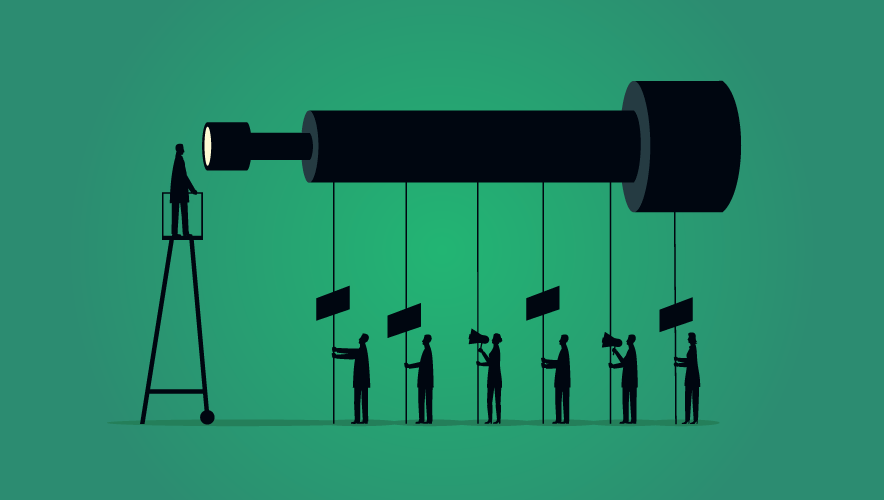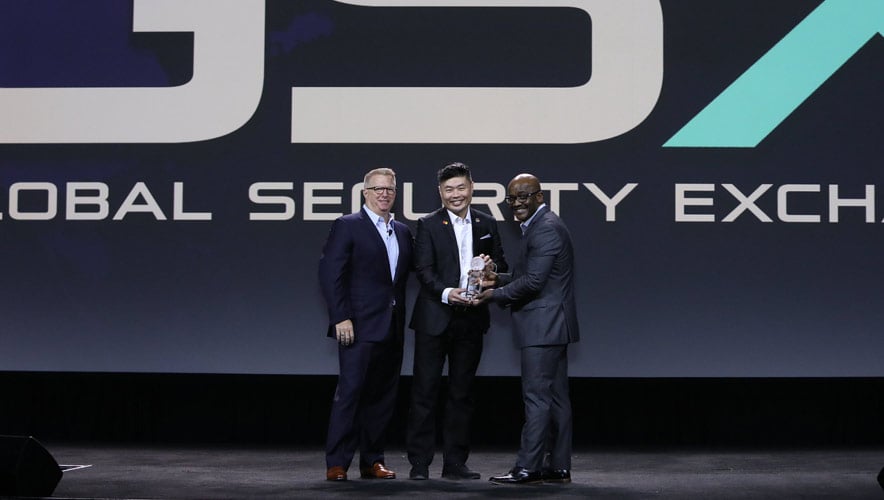Security Amid a Pro-Union Wave
Labor unions are coming back to the fore in the United States and beyond after decades of declining presence and membership. Union representation petitions filed with the U.S. National Labor Relations Board (NLRB) increased 57 percent between October 2021 and March 2022 when compared to the same period a year before, and unfair labor practice charges were up 14 percent. Unions won more elections in 2022 than they have in nearly two decades, according to Bloomberg Law.
No industry proved immune to the heightened scrutiny and demands from employees—coffee chains, retailers, warehouses, and technology contractors all began pushes for unions and collective bargaining agreements. And unions are popular among the broader population—68 percent of Americans approve of labor unions, according to a September 2021 Gallup poll.
The reasons behind the union boom are still up for debate, but the COVID-19 pandemic pushed many workers—especially those who were in high-risk, public-facing jobs during the early phases of the pandemic—to seek more control of their work environment and treatment, CNBC reported. In addition, many workers were asked to do things they had not been hired to do, such as enforce masking policies or check temperatures. Because lockdowns drove more people to socialize online, workers were able to quickly find likeminded coworkers or organizers to band together.
Successful unionization movements require a vote in which a majority of workers agree to establish a union and then the negotiation of a union contract between the employer and the union. This contract can cover everything from wages and benefits to dispute resolution processes to disciplinary action guidelines.
This process gives employees a greater level of influence over organizational decisions and spending, so some employers prefer to avoid or discourage unionization.
They may also seek to gather information to help the organization prepare for a unionization movement, such as learning about workers’ concerns, complaints, and demands.
The right to attempt to form a union is protected federally in the United States, however, and there are some lines that companies must not cross when an organization attempt begins in their facility or industry.
First and foremost—security guards and personnel cannot usually be in the same bargaining unit as other employees, says Daniel Schudroff, an attorney at Jackson Lewis P.C., based in New York City.
“Guards might be in charge of maintaining order,” Schudroff says. “The Labor Board and the National Labor Relations Act made the determination many years ago that they don’t want to put that conflict into play as a matter of course via certification.”
Security should not alone be arbiter of what’s going on. Make sure management makes the decisions, not the frontline person.
But this division does not mean security officers are separate from unionization activities. Their actions in response to pro-union activity in a facility—whether ordered by a manager or undertaken independently—could have serious ramifications for the organization if they interfere inappropriately, such as surveilling or interrogating pro-union employees.
The number one rule is do not break the law, says Jonathan Segal, partner and managing principal at Duane Morris Institute in Philadelphia, Pennsylvania. U.S. federal and state laws, executive actions, and court rulings regularly affect labor laws, so organizations need to devote resources to ensure their security practices and procedures are in compliance and driven by management—not lone actors.
However, the regulations and guidance change with each new NLRB president, Segal says, and even employment lawyers have to scramble to keep up with the latest restrictions and recommendations. It’s unfair to security officers, he adds, to ask them to navigate these regulatory waters along with their usual tasks.
“That’s a big gap I see, where security guards are asked to handle things on their own,” Segal says, including deciding in the moment how to handle a labor organizer coming onto company property multiple times, or employees deciding to walk out.
“Security should not alone be arbiter of what’s going on,” he adds. “Make sure management makes the decisions, not the frontline person.”
“Employers need to think about if security guards are enforcing security rules consistently, even-handedly, not discriminating against or for unions, not letting people on the premises in violation of the non-solicitation rule. ...Security guards can be a helpful force for employers to exercise their legal rights relative to union awareness and union activity,” Segal says.
Any violations of labor laws—such as interrogation or intimidation—could result in penalties from the NLRB, including greater access of union organizers onto company premises. Interference in a union election can also form the basis to overturn an election result, putting the organization in a tough position and giving union representatives more material to use against employers. For instance, a retail workers’ union accused Amazon of unlawfully interfering with a union election at an Alabama warehouse in early 2022. The union claimed that Amazon removed union literature from employee break rooms, limited workers’ access to the warehouse before and after shifts, and forced workers to attend anti-union meetings, Reuters reported. While Amazon responded to the allegations by saying it believed the company was fully compliant with the law, the claim could trigger a redo of the union vote at the warehouse.
Any overreach—including perceived overreach—can have serious ramifications for employers, both legally and reputationally, Schudroff says. Organizations could face liability under federal or state privacy laws for some forms of surveillance of union activities, and there are various litigation routes that a single employee or a group could take.
From a labor law perspective, union organizers could claim that surveillance interfered in the election. The NLRB recommended a rerun of a failed union attempt at the same Alabama Amazon warehouse in 2021 because the company had a mailbox installed on company property, and it was overlooked by video surveillance cameras—giving employees the impression that they were under surveillance while casting ballots, even though a tent Amazon erected around the mailbox allegedly shielded employees’ actions from cameras’ views.
“If somebody files an Unfair Labor Practice charge against an employer claiming surveillance, there could be liability under the National Labor Relations Act where an employer could be required to post a notice, could be required to read that notice to employees saying ‘we won’t surveil you anymore, we won’t engage in any unlawful surveillance,’” Schudroff notes. “That’s where the reputational risk can really come up: that’s when some labor organizations or employees can say, ‘Our employer was found guilty by the labor board for doing what they shouldn’t be doing.’” This can galvanize employees to pursue unionization.
One of the biggest hurdles here is training, according to Schudroff.
“It’s generally against the law, once there’s knowledge of union activity, for the employer or any of its agents to interrogate employees about union activity and to spy or surveil employees about their union activity,” he says. “Now, interrogation is a straightforward one: you start asking people, ‘Hey, did you go to the union meeting last night,’ or ‘Who else was at the union meeting last night,’ or types of questions designed to gain access to information about union organizing. That most likely is pretty straightforward and is generally considered to be at least objectionable—and most likely unlawful.”
If you don’t protect the competitive position of the employer, then jobs can be at risk.
But interrogation can have some nuance, and because security officers are often viewed as authority figures, even simple conversational questions about meetings and friend groups at work could give employees the sense that they are being probed for information. Even giving the impression of surveillance or interrogation—such as mentioning innocuous insider information about the meal at the union meeting—could result in an allegation of election interference or other illegality, Schudroff says.
Union activity in the United States can be a highly charged, polarized issue, though, and security personnel may find themselves in the midst of a workplace conflict with union ties, Segal says. In this case, he advises training security personnel to quell the active conflict—such as a heated argument between employees—and then wait for future instruction from a manager.
“You don’t want someone on the front line making that call on their own,” he notes. “If something is becoming truly disruptive, they should try to calm the disruption then seek additional guidance. They should not resolve it, not ignore it, but instead report it to an executive who has some knowledge of the labor laws. Saying ‘this is the situation I see, can you give me guidance?’ Because some of it may be protected and you can’t respond to it, or you need to respond to it in a way that’s based on the disruption, not the advocacy for a union.”
Organizations should also be cautious when it comes to surveillance. While the U.S. National Labor Relations Act—which was enacted in 1935—has no amendments to address scenarios with digital implications, the NLRB will issue decisions based on the original act’s expectations and apply it to current issues, such as social media and video/audio surveillance, Schudroff says.
The nuance around surveillance boils down to expectations of privacy, he adds. There are different expectations of privacy at work in a breakroom versus a small conference room, and employees may not be aware they are being recorded in those spaces. Laws around surveillance notification vary state by state in the United States, but “as a general matter, employers should not record any kind of union activity, period, absent there being some kind of directive from counsel to do so,” Schudroff says.
“An employer has to be very careful to figure out ‘well, if we’re listening, what are we gaining out of this?’ Because it’s probably going to be considered to be arguably unlawful,” Schudroff says. “So, you might want to switch the volume down to ensure you don’t have the sort of knowledge that’s gained through illicit means.”
Regarding social media, posts are typically public information unless they are password- protected. If an organization were to find pro-union posts or activity, it is no different from the union demonstrating in the public street in front of a facility—it’s open information, Schudroff notes. However, hiring someone to connect with people on social media—including under false pretenses or a fake profile—or sneaking into a private social media group to surveil activity could become an issue for employers.
If an organization brings in outside consultants, security professionals, or other service providers to work around a unionization effort, disclosing those parties to the U.S. Department of Labor (DOL) may be required. A consultant could be retained to lawfully gather information from employees, but there is sometimes an obligation to file disclosures with the DOL—therefore making the information available to both sides of the unionization movement—to maintain transparency, Schudroff notes.
“If an employer stays on the legal side of the line, there could be some reputational allegations that are brought by employees or a labor organization, but the employer at least then has a good faith response that they’re following the contours of the law here, through either their own internal security means or alternatively through who they’ve contracted to provide services,” he adds.
If a unionization movement is successful, that could mean big changes for security activity at a facility. Collective bargaining agreements usually produce employment contracts that influence disciplinary action and workplace conditions, so if an organization wants to install a full-scale video surveillance system in a building that never had one before, it will likely need to negotiate that with the union, Schudroff says. Any security measure or technology that could affect that contract or relate to employment could require negotiation.
Some security issues are considered entrepreneurial measures, though—designed to keep the organization functioning and profitable—such as intellectual property protections. Often, narrow-focused topics like those are considered managerial issues. Schudroff says these are usually not employment issues, until it comes to the matter of disciplining employees who break those measures.
One useful tactic in these efforts is to seek to resolve such queries without resorting to a full negotiation, Segal says.
“One of the things that I think employers need to do more of is give the unions notice and talk about the issue without conceding a duty to bargain,” he adds. “If there’s notice, even if there’s no concession to bargain, a lot of these issues can be resolved upfront. So, if there’s going to be something involving a change in ownership rights of intellectual property, an employer might say to the union ‘this is something we’re sending out to all employees—including union employees—if you have any thoughts, let us know so we can consider them.’ You’re giving the union notice; you’re not conceding a duty to bargain. If the union raises an issue, you can deal with the issue and figure it out on a more nuanced level.”
Even if the discussion results in a decision to bargain, the goodwill effort to discuss the change in advance likely improves the end result, Segal adds. Organizations should provide notice of the proposed change within a reasonable timeframe—at least two weeks, when possible, and not during a long holiday period. If that’s not feasible, explain the exigent circumstances where needed and let the union representative know the shortened timeframe for feedback, he advises.
“Memos or emails that say, ‘We want to bargain with you over…’ make me nervous, because that’s a concession,” Segal says. “Ignoring the union makes me nervous because that’s ignoring relationships. Notice without conceding is the way to begin the process, making it relational rather than legal.”
“In my experience, nine out of 10 times, if it’s legitimately something that’s a critical issue to protect the employer’s viability—such as intellectual property rights—and you give the union notice, the union will understand it’s not a management labor issue, it’s a competitor issue,” Segal says. “If you don’t protect the competitive position of the employer, then jobs can be at risk.”













